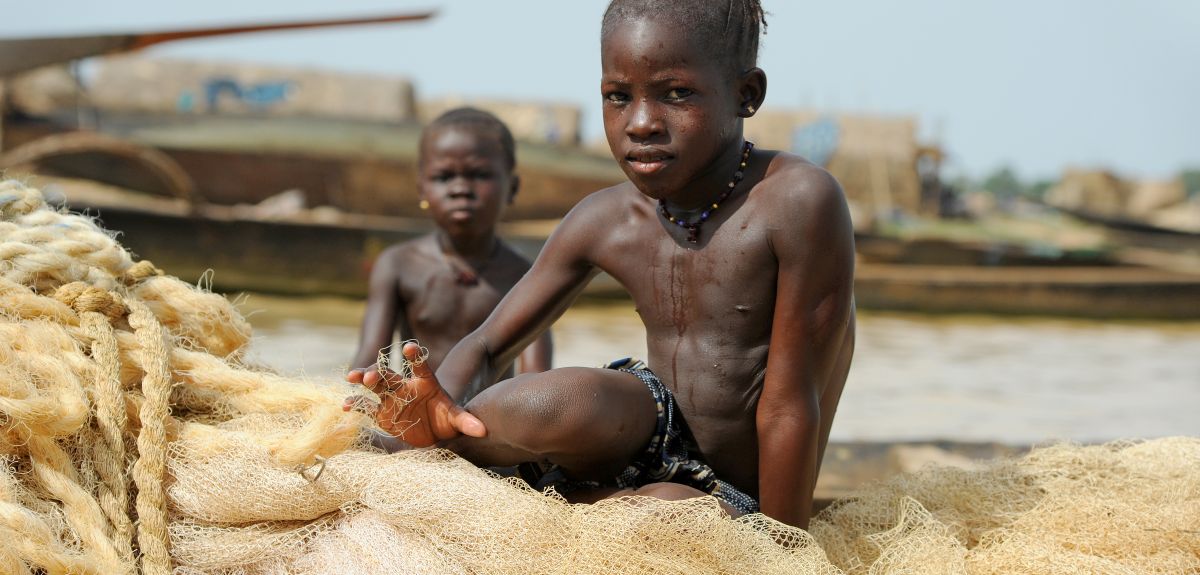
Half of the world's poor classed as 'destitute'
An Oxford University study to identify the multidimensionally poor in the developing world has found that in 49 countries, half of the poor are so deprived they should be classed as 'destitute'.
The researchers’ global multidimensional poverty index or MPI measures ‘overlapping deprivations’ in health, education and living standards, with the 'destitute' being those who experience extreme deprivation such as having lost two children or more, having someone severely malnourished in the household, or having no assets at all.
The study says overall the situation has improved for the world’s poor due to poverty reduction programmes and economic growth; however, there is still a formidable core of extremely poor people. The largest numbers of destitute people, 420 million, were found in South Asia. In India alone, drawing on the most recent official figures available, the Oxford researchers calculate around 343 million destitute people. In sub Saharan Africa, there are around 200 million destitute people, with the highest proportion found in Niger where over two-thirds (68.8%) of the population were classed as destitute.
The study by the Oxford Poverty and Human Development Initiative (OPHI) also identified countries where there were improvements for poor people. Of 34 countries for which there are data, those that made the most progress in reducing destitution were Ethiopia, followed by Niger, Ghana, Bolivia, Rwanda, Tanzania, Nepal, Haiti, Bangladesh and Zambia (all low income or least developed countries except Ghana and Bolivia). In Ethiopia, the research shows that the share of destitute people shrank by 30 percentage points between 2000 and 2011.
OPHI’s Director Dr Sabina Alkire, from the Oxford Department of International Development, said: 'There is a growing international consensus that we have to put an end to the worst forms of poverty and this should be the target for the new development agenda. While the successes of poorer countries show progress is being made, these findings show that for now, destitution – with all the grinding hardship it entails – remains a grim reality for hundreds of millions of people. Renewed efforts are needed post-2015 to ensure those in deepest poverty are not left behind.'
The global multidimensional poverty index (MPI) is unique in capturing the simultaneous disadvantages experienced by poor people, such as malnutrition, education and sanitation, providing a high-resolution lens on their lives. If people are deprived in one-third or more of ten (weighted) indicators, they are identified as MPI-poor.
In 2014, the global MPI covered a total of 108 countries which are home to 78% of the world’s population. Some 30% of them – 1.6 billion people – are identified as multidimensionally poor. Of these 1.6 billion, 85% live in rural areas, which is a markedly higher percentage than income poverty estimates of 70-75%. Most live in South Asia (52%), followed by Sub-Saharan Africa (29%), and most – 71% - live in middle income countries.
A destitute person in the new study is MPI-poor, and is also deprived in a third or more of the same weighted indicators, according to more extreme criteria: for example, where no one in the household has completed at least one year of schooling; or two or more children in the household have died.
Two-thirds of destitute people have someone at home with severe malnutrition. Some 40% of the destitute have a round trip of 45 minutes to find safe water by foot if they have access to it at all. Over 80% have a dirt floor, and more than 90% have no proper sanitation and have to relieve themselves outside, with all the vulnerability, fear and shame this entails, particularly for women.
 New study estimates NHS England spends 3% of its primary and secondary care budget on the health impacts of temperature
New study estimates NHS England spends 3% of its primary and secondary care budget on the health impacts of temperature
 International collaboration launches largest-ever therapeutics trial for patients hospitalised with dengue
International collaboration launches largest-ever therapeutics trial for patients hospitalised with dengue
 Oxford-built multi-agent assistant for cancer care to be piloted in collaboration with Microsoft
Oxford-built multi-agent assistant for cancer care to be piloted in collaboration with Microsoft
 World's first Phase II Nipah virus vaccine trial launch
World's first Phase II Nipah virus vaccine trial launch